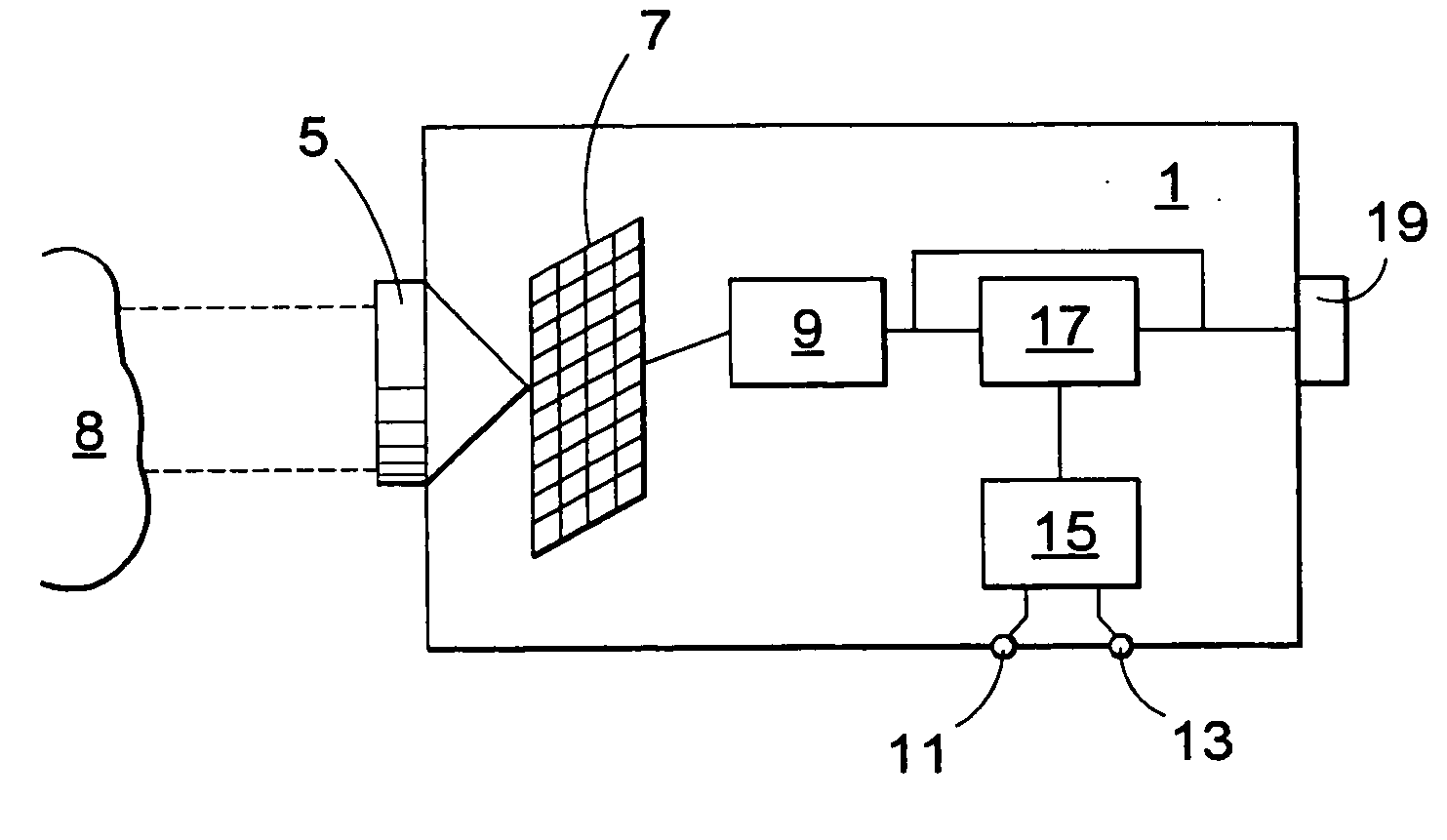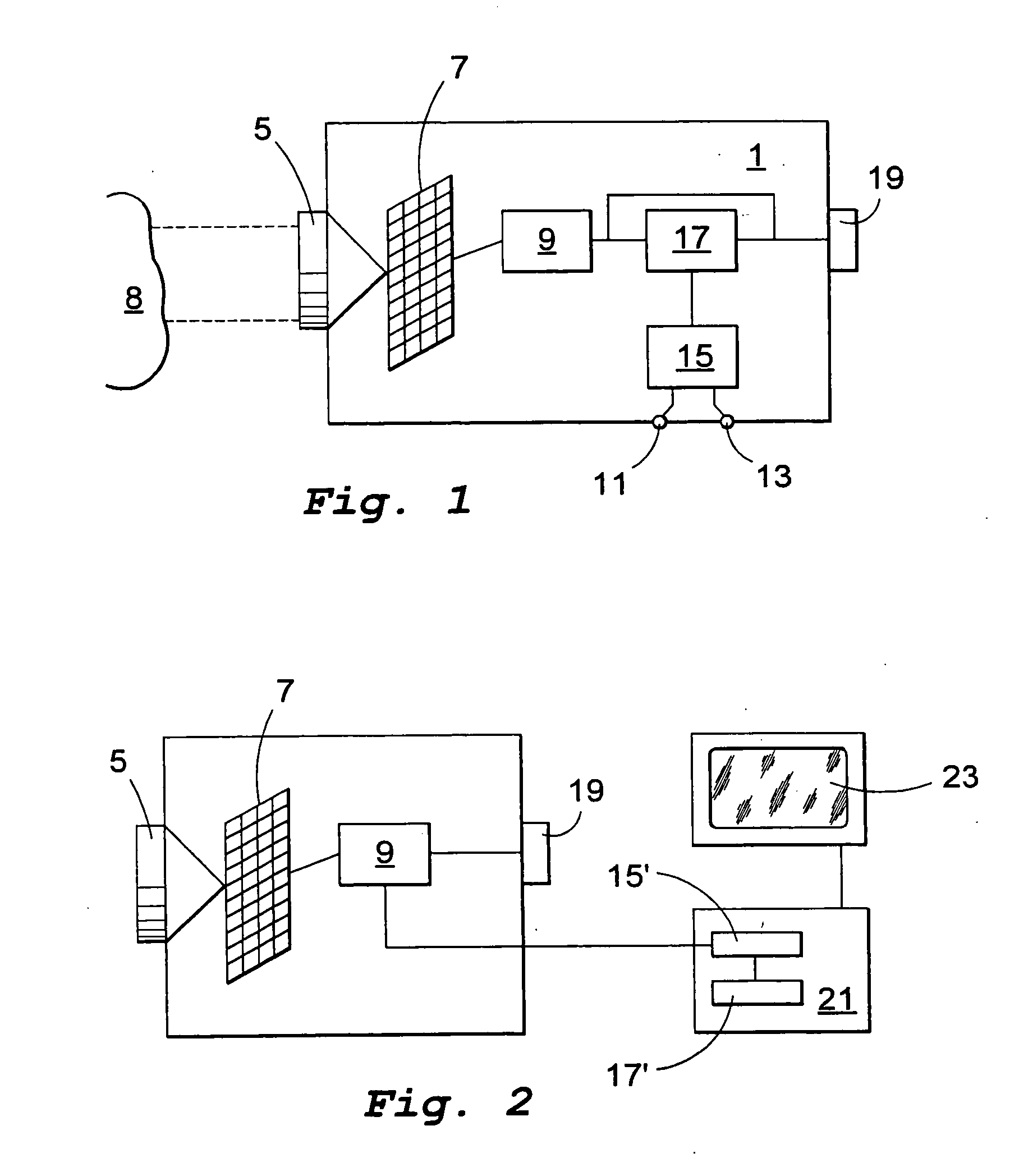Use of IR camera
a technology of ir camera and ir beam, which is applied in the field of ir beam camera, can solve the problems of high-risk areas, time-consuming measurements, and increased condensation risk of damp damage, and achieve the effect of reliable results
- Summary
- Abstract
- Description
- Claims
- Application Information
AI Technical Summary
Benefits of technology
Problems solved by technology
Method used
Image
Examples
Embodiment Construction
[0048]FIG. 1 shows an IR camera according to the invention. For registering IR images the camera unit 1 comprises the same functions as prior art cameras. The gathering of data and the data processing performed prior to displaying the image are carried out in the conventional way. This technology is known to the skilled person, but will be briefly discussed in the following. The incoming radiation to the camera is focused by at least one lens 5 onto a detector array 7. The detector array is typically a matrix of detector elements, each detecting radiation from a corresponding area on an object 8 being imaged. From the detector array the signal is fed to a signal conditioning unit 9 which performs conventional signal conditioning such as corrections for the inherent offset and gain drift.
[0049] It should be noted that the IR camera does not necessarily comprise a focal plane array. The inventive concept can also be implemented in an IR camera using an IR scanner.
[0050] According to...
PUM
 Login to View More
Login to View More Abstract
Description
Claims
Application Information
 Login to View More
Login to View More - R&D
- Intellectual Property
- Life Sciences
- Materials
- Tech Scout
- Unparalleled Data Quality
- Higher Quality Content
- 60% Fewer Hallucinations
Browse by: Latest US Patents, China's latest patents, Technical Efficacy Thesaurus, Application Domain, Technology Topic, Popular Technical Reports.
© 2025 PatSnap. All rights reserved.Legal|Privacy policy|Modern Slavery Act Transparency Statement|Sitemap|About US| Contact US: help@patsnap.com



